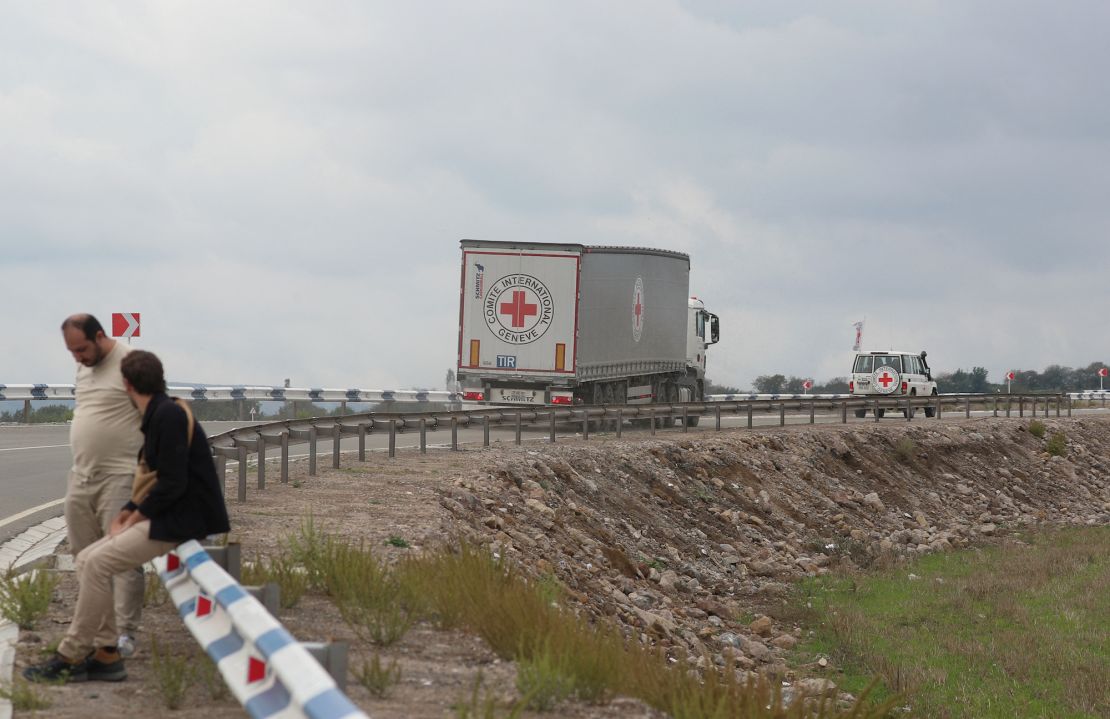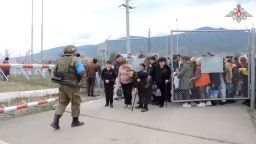The ethnic Armenian population in the breakaway Nagorno-Karabakh region will leave for Armenia after Azerbaijan reclaimed the territory in a brief offensive, a local official says.
“Our people do not want to live as part of Azerbaijan. Ninety-nine point nine percent prefer to leave our historic lands,” David Babayan, an adviser to Samvel Shahramanyan, the president of the self-styled Republic of Artsakh, told Reuters. The region is known as Artsakh to Armenians.
“The fate of our poor people will go down in history as a disgrace and a shame for the Armenian people and for the whole civilized world,” Babayan said, adding that those responsible will have to answer before God.
Azerbaijan’s short offensive this week ended in a Russia-brokered ceasefire in which separatist Armenian fighters agreed to surrender and lay down their arms. The truce apparently marked the end of a conflict that has raged on and off for three decades.
Although internationally recognized as part of Azerbaijan, the landlocked mountainous region is home to 120,000 ethnic Armenians, who make up the majority of the population, and have created their own de facto government, rejecting Azerbaijani rule.
Azerbaijan says it will guarantee the rights of those living in the region. But Armenian Prime Minister Nikol Pashinyan and international experts have repeatedly warned of the risk of ethnic cleansing of Armenians in the enclave.

Babayan’s comments come as the first aid reached Nagorno-Karabkh Saturday since the ceasefire began.
The convoy consisted of nearly 70 metric tons of humanitarian supplies including wheat flour, salt, dried yeast and sunflower oil, the International Committee of the Red Cross (ICRC) said in a statement on X, formerly known as Twitter.
The aid had been transported along the Lachin corridor, the only road connecting Armenia and Nagorno-Karabakh, the ICRC said.
The road has been blockaded since December 2022 by Azerbaijan, making it inaccessible to civilian and commercial traffic.
The ICRC added that it carried out the medical evacuation of 17 people who were wounded during fighting and had delivered medical supplies and body bags as aid.
“Given the scale of humanitarian needs, we are increasing our presence there with specialized personnel in health, forensics, protection, and weapons contamination,” the ICRC said.
Russia – the traditional regional power broker – has delivered 50 tons of aid, including rations and basic necessities, to Stepanakert, the region’s capital, Russian state news agency RIA Novosti reported Saturday.
At least 200 people were killed and over 400 others wounded in Azerbaijan’s military operation, officials said.
US Senator Gary Peters, who is currently in Armenia leading a US Congressional Delegation, said he viewed the blockade at the Lachin corridor with the US ambassador to Armenia Kristina Kvien and governor of Armenia’s Syunik province, Robert Ghukasyan.
“I’ve talked to many people who are very concerned about their loved ones, families and what has happened to them,” Peters told reporters on Saturday.
“They know they have been suffering as a result of the blockade over many months, shortages of food, medical supplies, basic gasoline and petrol,” he added. “It’s a dire situation from what I have heard and I’m very concerned.”



